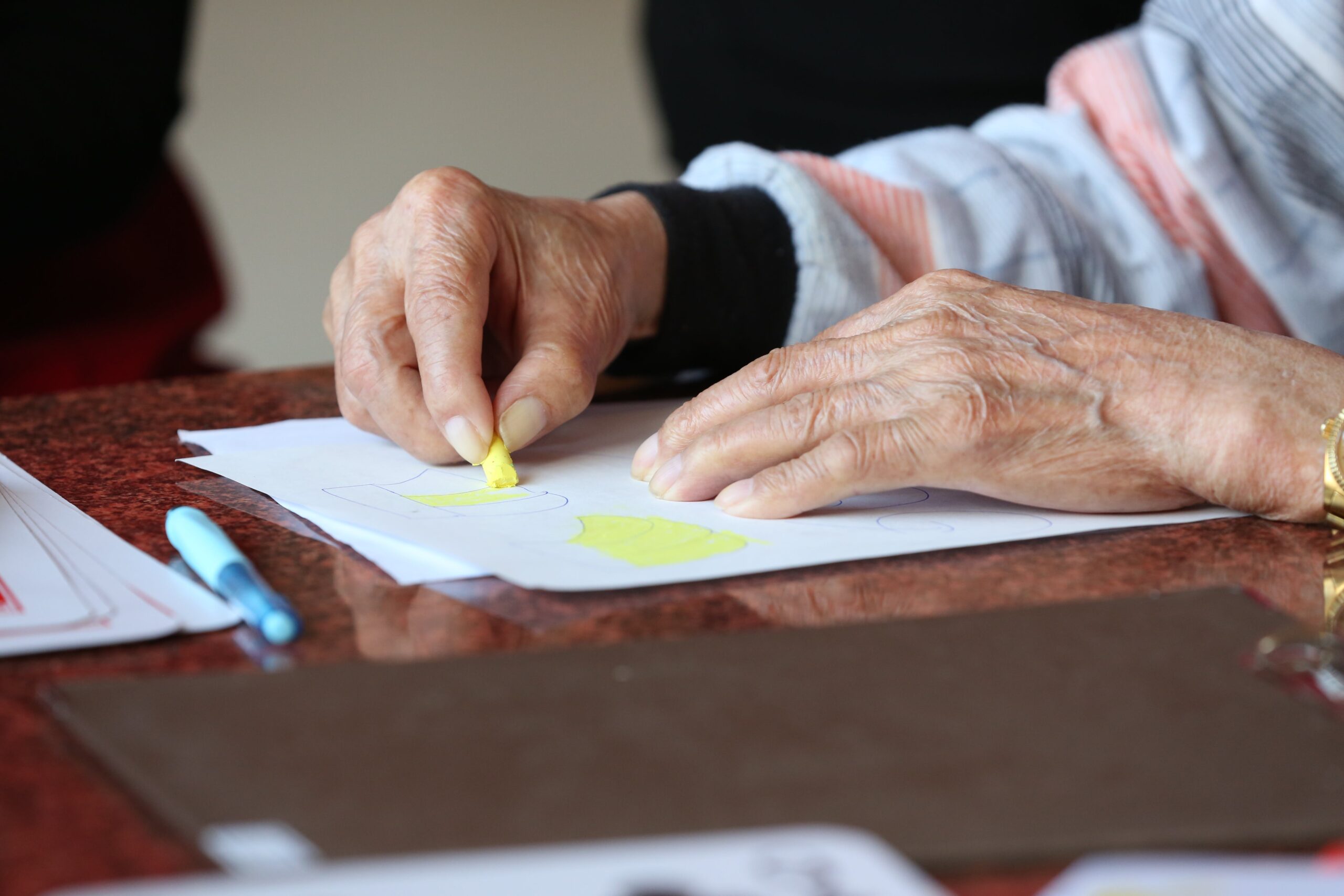Introduction:
Arthritis, a chronic condition characterized by inflammation of the joints, affects millions of people worldwide. Conventional medicine offers various treatments, but some individuals seek alternative approaches, including homeopathy, to manage arthritis symptoms. Homeopathy, a holistic system of medicine, focuses on stimulating the body’s natural healing mechanisms. In this blog, we’ll explore seven effective ways homeopathy can help in the treatment of arthritis.
1. Individualized Treatment Plans:
Individualized treatment plans are crucial in homeopathy, especially when it comes to addressing conditions like Arthritis. Homeopathy is based on the principle of “like cures like,” meaning that a substance that can cause symptoms in a healthy person can stimulate the healing of similar symptoms in a person who is unwell. Additionally, homeopathy emphasizes the holistic nature of an individual, taking into account not only the physical symptoms but also the mental and emotional aspects.
Here are several reasons why individualized treatment plans are important in curing arthritis through homeopathy:
- Unique Symptom Presentation: Arthritis can manifest in various ways, with individuals experiencing different symptoms and degrees of severity. Some may have acute pain, while others may primarily struggle with stiffness or inflammation. Each person’s experience is unique, and an individualized approach allows the homeopath to tailor the treatment to the specific symptoms of the patient.
- Holistic Understanding: Homeopathy considers the person as a whole, including their physical, mental, and emotional aspects. Arthritis is not only a physical ailment but can also be influenced by stress, emotional factors, and lifestyle. By understanding the individual in a holistic manner, homeopathy aims to address the root cause of the condition and improve overall well-being.
- Differential Diagnosis: There are different types of arthritis, such as rheumatoid arthritis, osteoarthritis, and psoriatic Arthritis, each with its unique characteristics. Homeopathy involves a thorough examination of symptoms to make a precise diagnosis. Individualized treatment plans take into account not only the type of arthritis but also the specific symptoms and their variations in each case.
- Personalized Response to Remedies: Homeopathic remedies are chosen based on the principle of individualization. What works for one person may not work as effectively for another. By tailoring remedies to the individual’s unique symptoms and constitution, homeopathy aims to stimulate the body’s innate healing response. This personalized approach increases the likelihood of a positive response to treatment.
- Addressing Underlying Causes: Homeopathy seeks to address the underlying causes of the symptoms rather than merely suppressing them. Individualized treatment plans allow homeopaths to explore factors such as genetic predispositions, lifestyle, environmental influences, and emotional stressors that may contribute to the development and exacerbation of arthritis.
- Adaptability to Changing Symptoms: Arthritis symptoms can vary over time, influenced by factors such as weather, stress, and physical activity. An individualized treatment plan allows for adjustments as symptoms evolve. Homeopaths can adapt the remedy selection based on the changing nature of the arthritis and the overall health of the individual.

2. Arnica montana for Pain Management:
Arnica montana holds significance in homeopathic treatment for pain management, particularly in the context of Arthritis, for several reasons:
- Anti-Inflammatory Properties: Arnica montana is renowned for its potent anti-inflammatory properties. Arthritis is characterized by inflammation of the joints, leading to pain and swelling. Arnica is believed to help reduce inflammation, thereby alleviating the associated discomfort.
- Pain Relief: Arthritis often causes varying degrees of pain, ranging from mild to severe. Arnica is known for its analgesic (pain-relieving) effects. It is commonly used to address pain resulting from injuries, trauma, or inflammatory conditions, making it a valuable remedy for arthritis-related pain.
- Trauma and Bruising: In the context of arthritis, joint pain can sometimes be exacerbated by injuries or trauma. Arnica is often recommended for conditions where there is a history of trauma or bruising, as it is thought to facilitate the healing process and mitigate the pain associated with such incidents.
- Post-Operative Support: Some individuals with arthritis may undergo surgical procedures to address joint issues. Arnica is frequently used in homeopathy to assist in post-operative recovery. It is believed to help reduce post-surgical swelling, bruising, and pain, promoting a smoother healing process.
- Ease of Application: Arnica is available in various forms, including creams, gels, and pellets, making it convenient for different preferences and applications. Topical arnica preparations can be applied directly to the affected joints, offering localized relief.
- Holistic Approach: Homeopathy emphasizes a holistic approach to healing, addressing not only the physical symptoms but also the emotional and mental aspects of an individual. Arnica, in this context, may be included in a comprehensive treatment plan to promote overall well-being.
- Individualized Treatment: Homeopathy recognizes the uniqueness of each individual, and the choice of remedies, including Arnica montana, is based on the specific symptoms and experiences of the person. By tailoring the treatment to the individual, homeopathy aims to address the root cause of the arthritis symptoms.
3. Rhus toxicodendron for Rheumatoid Arthritis:
Rhus toxicodendron, commonly known as poison ivy, is an important homeopathic remedy frequently used in the context of Arthritis. This remedy is derived from the toxic plant, but in its homeopathic form, it is diluted and potentized to eliminate toxicity while retaining therapeutic properties. Here are several reasons why Rhus toxicodendron is considered significant in the homeopathic treatment of arthritis:
- Rheumatoid Arthritis Relief: Rhus toxicodendron is often recommended for individuals suffering from rheumatoid arthritis. It is believed to be particularly effective when the symptoms include joint pain, stiffness, and inflammation. People who experience worsening of symptoms in cold, damp weather may find relief from this remedy.
- Stiffness and Restlessness: This homeopathic remedy is known for addressing stiffness in the joints, especially stiffness that improves with continued movement. Individuals who experience restlessness and discomfort, which prompts them to move for relief, may find Rhus toxicodendron beneficial.
- Pain Alleviation: The remedy is associated with easing pain in the joints and muscles. Arthritis pain, whether sharp or aching, may be mitigated with the use of Rhus toxicodendron. It’s often recommended for conditions where the pain is worse upon initial movement but improves with continued activity.
- Management of Strains and Sprains: Beyond Arthritis, Rhus toxicodendron is also employed in homeopathy for the treatment of strains and sprains. Its ability to alleviate pain and stiffness in joints makes it suitable for addressing musculoskeletal issues, which are common in arthritis.
- Aggravation from Cold and Dampness: The symptoms associated with arthritis, such as joint pain and stiffness, are often aggravated by exposure to cold and damp conditions. Rhus toxicodendron is known for its affinity to conditions worsened by cold and damp weather, making it a valuable remedy for individuals whose arthritis symptoms are influenced by these environmental factors.
- Inflammation Reduction: Homeopathy often focuses on reducing inflammation as a key aspect of treating arthritis. Rhus toxicodendron is believed to have anti-inflammatory properties, helping to decrease swelling and promote better joint function.
- Individualized Treatment: Homeopathy emphasizes individualized treatment plans based on the specific symptoms and characteristics of each person. Rhus toxicodendron is selected based on a person’s unique presentation, ensuring a tailored approach to arthritis management.
4. Bryonia alba for Osteoarthritis:
Bryonia alba, a homeopathic remedy derived from the white bryony plant, is often considered important in the context of homeopathic treatment for osteoarthritis for several reasons:
- Symptom Alignment: Bryonia alba is commonly prescribed when the symptoms of osteoarthritis align with its characteristic indications. This remedy is particularly associated with conditions where pain is aggravated by movement and improved with rest. In osteoarthritis, individuals often experience increased pain and discomfort when joints are in motion, making Bryonia alba a potentially suitable choice.
- Joint Stiffness: Osteoarthritis is characterized by joint stiffness, especially after periods of inactivity. Bryonia alba is believed to be beneficial in addressing this stiffness, promoting increased flexibility and reducing discomfort. It may provide relief for individuals who find it challenging to move their joints due to stiffness and pain.
- Inflammation Reduction: Inflammation is a common component of osteoarthritis, contributing to pain and swelling in the affected joints. Bryonia alba is thought to have anti-inflammatory properties, and its use may be associated with a reduction in joint inflammation. By addressing inflammation, this remedy aims to alleviate some of the discomfort associated with osteoarthritis.
- Individualization in Homeopathy: Homeopathy emphasizes individualized treatment plans based on the specific symptoms and characteristics of each person. Bryonia alba is selected based on the unique presentation of symptoms in individuals with osteoarthritis, such as the type and location of pain, aggravating factors, and associated conditions. This tailored approach is a fundamental principle of homeopathic practice.
- Complementary to Conventional Treatment: Homeopathy is often used as a complementary therapy alongside conventional medical treatments. Bryonia alba may be integrated into an overall treatment plan that includes lifestyle modifications, physical therapy, and other conventional interventions. This integrative approach aims to provide comprehensive care and address the diverse aspects of osteoarthritis management.
5. Ruta Graveolens for Tendonitis:
Ruta Graveolens, commonly known as ruta, is a homeopathic remedy that is often considered for conditions involving tendons, ligaments, and connective tissues. While Arthritis and tendonitis are distinct conditions, they can often coexist, and some forms of arthritis, such as rheumatoid Arthritis, can lead to tendon inflammation. Here are reasons why Ruta Graveolens is considered important in the context of homeopathic treatment for tendonitis and arthritis:
- Tendonitis Symptoms: Tendonitis is characterized by inflammation of the tendons, leading to pain, swelling, and restricted movement. Ruta Graveolens is believed to be particularly beneficial for individuals experiencing tendonitis symptoms. It may help reduce inflammation, relieve pain, and improve flexibility in affected areas.
- Overexertion and Strain: Ruta is often recommended when tendonitis is a result of overexertion, strain, or repetitive use of specific muscles or joints. People with arthritis may experience increased stress on tendons and ligaments due to joint inflammation, and Ruta is thought to address these issues.
- Injury and Trauma: Ruta Graveolens is also indicated in homeopathy for cases where tendonitis results from injury or trauma. In arthritis, joint damage and inflammation can contribute to injuries in the surrounding tissues, and Ruta is believed to aid in the healing process.
- Stiffness and Tension: Individuals with arthritis often experience stiffness and tension in the affected joints and surrounding areas. Ruta is thought to be helpful in relieving stiffness, especially when it is accompanied by a sensation of bruising or soreness.
- Improvement with Rest: Similar to other homeopathic remedies, Ruta is often associated with symptoms that improve with rest. In cases where joint and tendon discomfort is relieved by rest and worsened by movement, Ruta may be considered in the homeopathic treatment plan.
- Comprehensive Approach: Homeopathy takes a holistic approach to healing, considering both physical and emotional aspects of an individual. Ruta Graveolens is selected based on the totality of symptoms, considering not only the physical manifestations but also the emotional state of the person. This holistic perspective aligns with the principles of homeopathy in addressing the root cause of the ailment.
6. Causticum for Joint Deformities:
Causticum is considered an important homeopathic remedy for joint deformities associated with Arthritis due to its specific indications and potential benefits. Here are several reasons why Causticum may be recommended for individuals with arthritis and joint deformities in the context of homeopathic treatment:
- Joint Deformities and Contractures: Causticum is often prescribed when arthritis leads to joint deformities and contractures, particularly in conditions like rheumatoid arthritis. It is believed to help manage the stiffness and loss of flexibility associated with these deformities.
- Stiffness and Rigidity: Individuals experiencing stiffness and rigidity in their joints, especially in the morning or after periods of rest, may find Causticum beneficial. This remedy is thought to address the characteristic stiffness that can accompany arthritis, making movement challenging.
- Progressive Loss of Joint Function: In cases where arthritis is leading to a progressive loss of joint function, Causticum is considered a valuable remedy. It is believed to work on the deeper layers of the musculoskeletal system, helping to alleviate symptoms and potentially slow down the progression of joint deformities.
- Tearing Pains: Causticum is indicated when individuals experience tearing or drawing pains in the affected joints. These sensations may be associated with the inflammation and structural changes occurring in arthritic joints.
- Effect on Tendons and Ligaments: This homeopathic remedy is thought to have an affinity for tendons and ligaments. In arthritis, where these structures can be affected, Causticum is believed to address issues related to the connective tissues, potentially reducing pain and improving joint function.
- Aggravation from Cold and Damp Weather: Causticum is often recommended when joint deformities and associated symptoms worsen in cold, damp weather. Individuals who experience increased pain and stiffness under such conditions may find relief with this remedy.
- Emotional Component: Homeopathy recognizes the importance of the mind-body connection. Causticum is often chosen when there is an emotional component to the arthritis, such as frustration, grief, or a sense of powerlessness. Addressing the emotional aspect is considered integral to the overall healing process in homeopathy.

7. Mind-Body Connection:
The mind-body connection is a crucial aspect when it comes to treating arthritis through homeopathy, and it plays a significant role in the overall philosophy of homeopathic medicine. Homeopathy views the individual as a whole, considering not only the physical symptoms but also the emotional and mental aspects of health.





1 thought on “Curing Arthritis Through Homeopathy-7 Effective Ways”